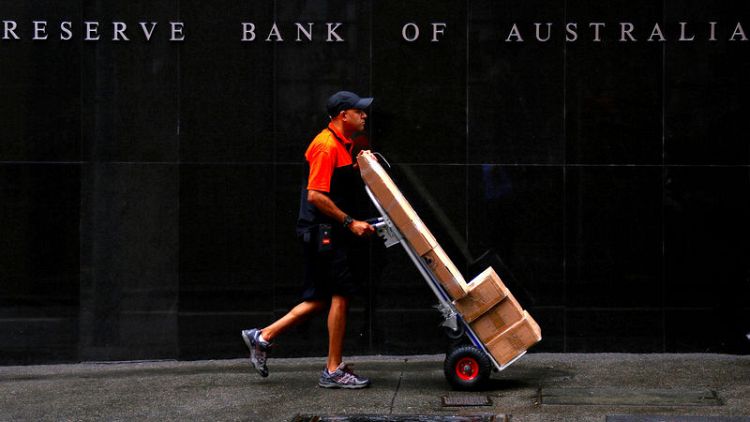By Swati Pandey
SYDNEY (Reuters) - Australia's central bank on Wednesday opened the door to a possible rate cut if unemployment increased and inflation failed to pick up, although its central scenario was for economic growth to remain above trend and the jobless rate to tick lower.
The Reserve Bank of Australia (RBA) has left its official cash rate at a record low 1.50 percent since August 2016 and Governor Philip Lowe has repeatedly emphasised the next move in interest rates would be up, rather than down.
However, in a speech on Wednesday Lowe said rates could go either way, underscoring a remarkable shift in the RBA's long-held stance and sent the local dollar sliding 0.8 percent to $0.7178.
"Over the past year, the next-move-is-up scenarios were more likely than the next-move-is-down scenarios. Today, the probabilities appear to be more evenly balanced," he said in Sydney.
"In the event of a sustained increase in the unemployment rate and a lack of further progress towards the inflation objective, lower interest rates might be appropriate at some point," Lowe added.
The RBA Board still does not see a strong case for a near-term change in the cash rate as policymakers assess the shifts in the global economy and the strength of household spending.
Lowe listed some downside risks to the RBA's outlook including the ongoing Sino-U.S. trade war, rise of global populism, Britain's complicated exit from the European Union, political headwinds in the United States and a cooling in China's economy.
Reflecting these concerns, interest rates futures are now pricing in a 50-50 chance of an RBA rate cut by the end of the year.
On the whole, however, Lowe was still broadly optimistic about Australia's A$1.8 trillion economy, with his central scenario for above-trend growth of 3 percent over 2019 and 2.75 percent over 2020.
These forecasts were slightly weaker than the RBA's previous predictions in November, underlining a modest downgrading of the outlook for household consumption and residential construction.
The RBA chief sounded confident such above-trend growth would lead to stronger wages and faster inflation over time.
He also spent considerable time talking about a downturn in Australia's once red-hot housing market, predicting the economy will weather the correction.
Even so, "continued low income growth, together with falling housing prices, would be an unwelcome combination and would make for a softer outlook for the economy," Lowe warned.
Australian home prices started the new year on another sour note, with home values in the largest market of Sydney now back to levels last seen in mid-2016.
Lowe said he was keeping a close eye on the labour market, which has been tightening since early 2017 with the unemployment rate down to over seven year lows of 5 percent.
If jobs growth continued and wages rose more quickly then "it will be appropriate to lift the cash rate at some point," Lowe said.
On the other hand, if the unemployment rate started to increase and inflation remained lukewarm the RBA may be forced to trim rates to further record lows, the RBA chief said.
"We have the flexibility to do this if needed."
(Reporting by Swati Pandey and Wayne Cole; Editing by Sam Holmes & Shri Navaratnam)



